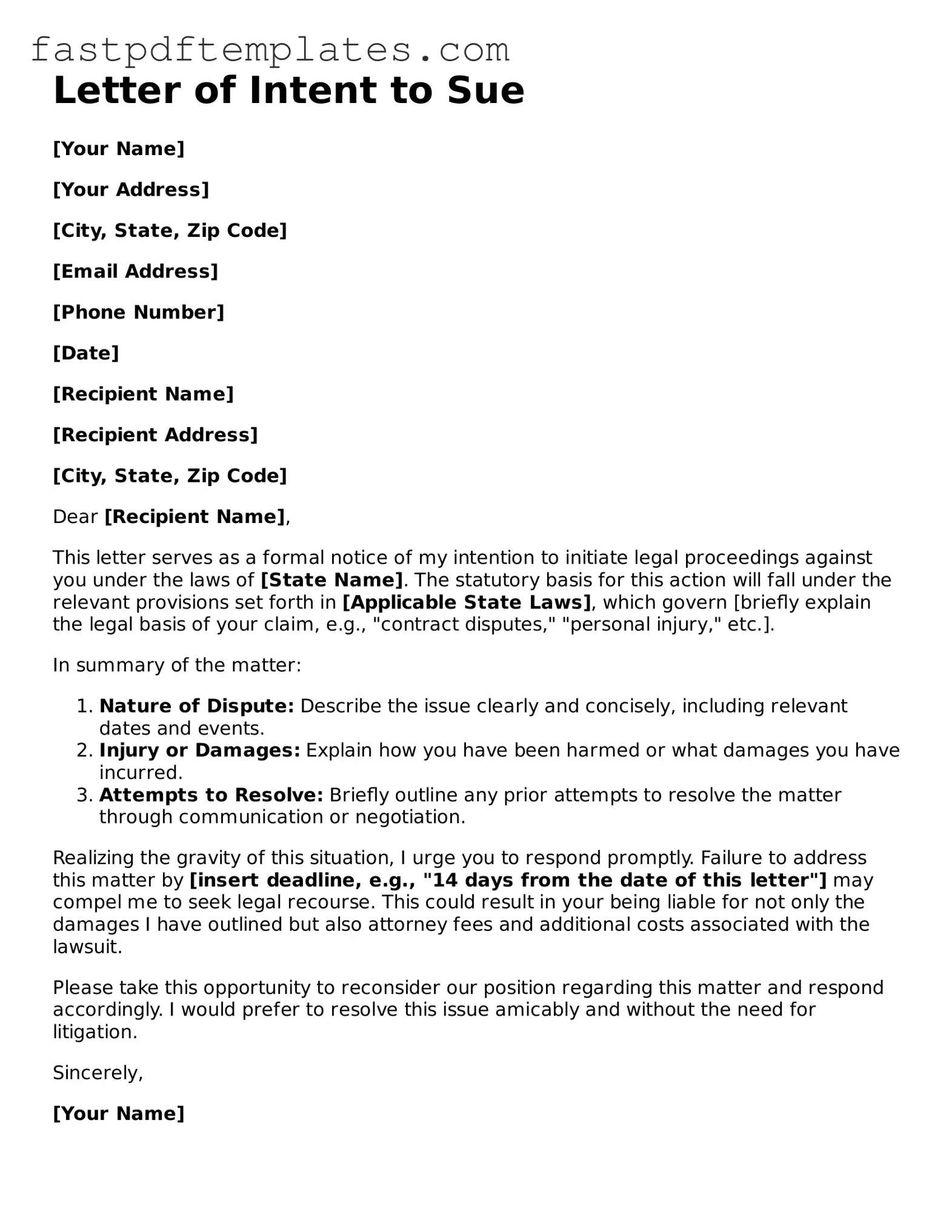A demand letter serves as a formal request for action or compensation from one party to another. It outlines the grievances the sender has experienced and specifies the desired outcome. Much like a Letter of Intent to Sue, a demand letter aims to resolve disputes before escalating to legal action. The tone is often assertive yet professional, urging the recipient to address the issue promptly to avoid further legal complications.
A notice of claim is a document often required in certain jurisdictions before an individual can file a lawsuit against a government entity. Similar to a Letter of Intent to Sue, it serves as a preliminary step that notifies the government of the potential legal action. This document outlines the basis for the claim and the damages sought, giving the government an opportunity to respond or resolve the issue before litigation begins.
An arbitration demand initiates the arbitration process, which is an alternative to traditional litigation. This document, like a Letter of Intent to Sue, signals that a party is serious about resolving a dispute. It outlines the nature of the dispute and the relief sought. Both documents aim to prompt a resolution, but arbitration demands specifically indicate a preference for arbitration over court proceedings.
A complaint is the formal document filed in court to initiate a lawsuit. It shares similarities with a Letter of Intent to Sue in that both documents articulate grievances and the relief sought. However, while the Letter of Intent is often a prelude to litigation, a complaint is the first step in the actual legal process, setting the stage for a court case.
A settlement agreement is a document that outlines the terms under which parties agree to resolve a dispute without going to trial. Like a Letter of Intent to Sue, it reflects the parties' desire to reach a resolution. However, a settlement agreement is typically reached after negotiations, while a Letter of Intent to Sue serves as a precursor, indicating that legal action may be taken if the dispute is not resolved.
A mediation request initiates the mediation process, where a neutral third party helps the disputing parties find common ground. This document is similar to a Letter of Intent to Sue in that both signal a willingness to resolve a conflict. However, mediation requests are specifically aimed at facilitating discussion and compromise, whereas a Letter of Intent to Sue indicates a readiness to pursue legal action if necessary.
A pre-litigation notice serves as a warning to a potential defendant that legal action may be forthcoming. It is similar to a Letter of Intent to Sue in that it sets the stage for possible litigation. This notice typically outlines the claims and the relief sought, allowing the recipient to understand the seriousness of the situation and potentially prompting a resolution before a lawsuit is filed.
A release of claims document is used when parties agree to relinquish their rights to pursue further legal action regarding a specific issue. It shares a connection with a Letter of Intent to Sue in that both documents involve the resolution of disputes. However, a release of claims is a final agreement, while a Letter of Intent to Sue indicates that the sender is prepared to take legal action if the matter is not resolved satisfactorily.
